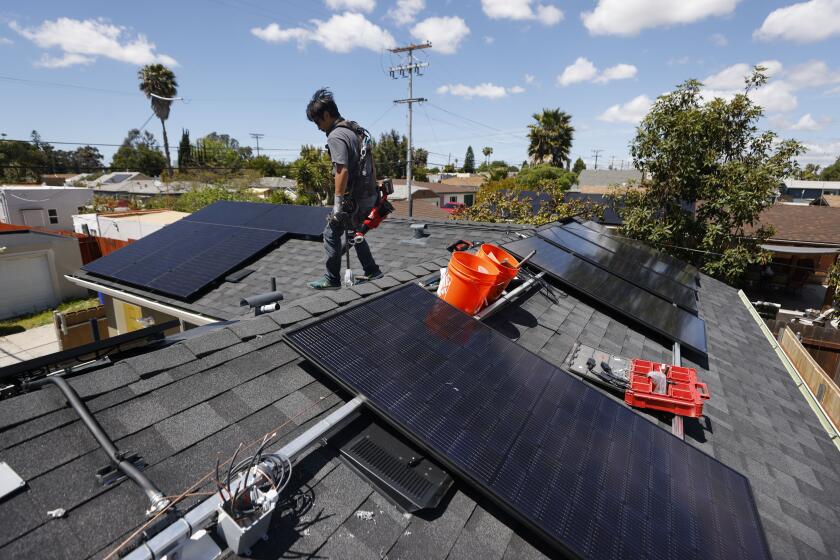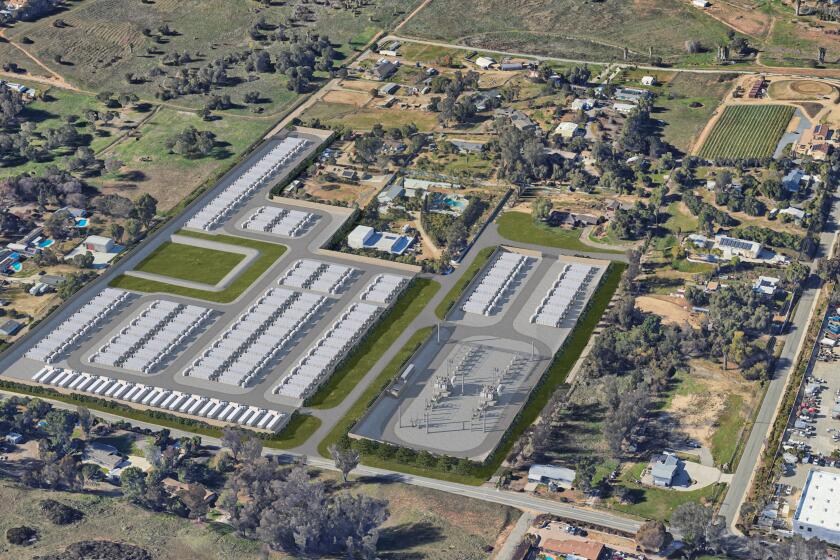Gasoline prices creeping back up

If you get the feeling you’re paying a little bit more for gasoline lately, you’re right.
The average price of a gallon of regular-grade gasoline in California has gone up 20 cents, or 7.5 percent, since the end of November. That’s slightly higher than the national average, which has gone up 7.1 percent since Nov. 30.
Most energy analysts attribute the bump to a recent decision by the Organization of Petroleum Exporting Countries to cut crude oil production.
But another bump is coming, at least here in Southern California.
The annual transition by refiners from winter-blend gasoline to the more expensive summer-blend is under way.
What’s considered the summer driving season starts earlier in the Golden State than other parts of the country. Retailers in Southern California must sell the summer-blend by April 1. The deadline for Northern California is May 1.
The summer blend is more environmentally friendly but is harder to produce than winter grade fuel because it has lower concentrations of volatile hydrocarbon chemicals such as butane.
“This time of year you can expect that the prices will go up pretty strongly in early February because of the additional shortfall in supply,” said Dave Hackett, president of Stillwater Associates, an Irvine-based transportation energy consulting company.
Hackett said he anticipates prices to go up another 10 to 15 cents a gallon in Southern California.
“I would expect that retail prices will start to respond over the next couple of weeks,” he said.
The price increase of crude oil was attributed to OPEC’s announcement Nov. 30 calling on its members to limit production. By reducing production, the oil ministers hoped to boost the international price.
And on Monday, it appeared that OPEC’s 13 members have made good on their promise to trim output starting in January.
The cartel announced it had cut production 890,000 barrels a day since December, and secondary sources monitoring OPEC say the group’s pledge had reached a compliance rate of better than 90 percent, allaying at least some suspicions that members might undermine the deal by cheating.
“I am somewhat surprised because I was among those skeptics” about OPEC members holding the line, said Akos Losz, senior researcher at the Center on Global Energy Policy at Columbia University. “With compliance they were able to put a floor on the price and it looks like it’s better for major producers like Saudi Arabia.”
The Saudis, OPEC’s dominant member, cut production more than originally promised, to less than 10 million barrels a day. Kuwait also made a large reduction, as did Iraq and the United Arab Emirates, although Iraq and the UAE did not cut as deeply as they pledged at first.
Although Russia is not a member of OPEC, it agreed last November to reduce output and, according to the International Energy Agency, Russia has lowered its oil output along the same lines as OPEC.
Since the Nov. 30 announcement, the price of crude oil has gone up about 20 percent, a far cry from the trough that was hit almost exactly one year ago — Feb. 11, 2016 — when the price dropped to a 13-year low of $26.05 a barrel.
At the close of trading Monday, the price of Brent crude — the international benchmark — was $55.59 a barrel, and the price of West Texas Intermediate — the recognized price for most North American producers — was $52.93 a barrel.
The price of gasoline roughly tracks the price of crude.
But while prices are creeping up, some downward pressure may be applied by U.S. oil producers that could offset any potential spikes.
While the oil slump bankrupted some U.S. companies, those that survived have fine-tuned their ability to extract shale oil deposits through hydraulic fracturing and horizontal drilling techniques — what the Energy Institute at the Haas School of Business at Cal-Berkeley called Monday “a perfect example of learning-by-doing.”
“They have improved their productivity quite a bit,” Losz said. What in 2014 cost $80 a barrel “now costs only $50 a barrel or less to produce on average in the U.S. shale space. And in parts of the Permian (Basin), it’s much less.”
Although global inventories of crude are still high, domestic producers have been getting back into the drilling game. The number of U.S. rigs drilling for oil and natural gas was up by 12 last week, the fourth straight week of increases.
Such moves could offset dramatic spikes in oil, and by extension, gasoline prices, Hackett said, barring unforeseen geopolitical or regional crises.
“Gasoline prices will be relatively stable and in the vicinity of where they are now (in California) — $2.50 to $3, depending on where you go,” Hackett said.
As recently as July 2015, the average price of regular gasoline in California was $3.90 a gallon and consistently topped $4 a gallon until July 2014.
“I don’t see too much speculation that oil prices are going to shoot back up to that level any time soon,” said Losz. “It seems like we have a new, lower equilibrium for oil prices in the $45 to $65 (a barrel) range.”
Inching up at the pump
The average price for regular gasoline in California since OPEC production cut announcement Nov. 30, 2016:
11/28/16 $2.67
12/12/16 $2.67
12/26/16 $2.71
1/16/17 $2.79
1/30/17 $2.79
2/13/17 $2.87
Source: U.S. Energy Information Administration
Business
rob.nikolewski@sduniontribune.com
(619) 293-1251 Twitter: @robnikolewski
ALSO
OPEC agrees to curtail production
Boiling over on the border: Why gas prices have spiked in Mexico
Trump figures to be a friend to oil — but not across the board
Get U-T Business in your inbox on Mondays
Get ready for your week with the week’s top business stories from San Diego and California, in your inbox Monday mornings.
You may occasionally receive promotional content from the San Diego Union-Tribune.










